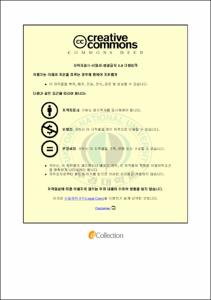괭생이 모자반 추출물의 아토피 억제 효과
- Alternative Title
- Inhibitory Effects of Sargassum horneri Extracts on Atopic Disease
- Abstract
- Atopy is the propensity of an individual to produce IgE antibody in response to various environmental antigens and to develop strong immediate hypersensitivity responses. The atopy is designated as symptoms like atopic dermatitis, allergic rhinitis, asthma and systemic anaphylaxis. Due to genetic, immunological and environmental factors, the incidence of atopy has been steadily growing. Recently, many investigators have initiated searches for anti-atopy substance from natural resources. Therefore, we studied chemical properties, inhibitory effects of allergy, inflammation and atopic dermatitis of sargassum horneri ethanol extract (SHEE) and water extract (SHWE). Moisture, ash, protein and lipid contents were measured to investigate the proximate compositon of sargassum horneri (SH). Also, pH and color of SHEE and SHWE were observed. The results showed that moisture, ash, lipid and protein contents of SH revealed 7.48, 17.01, 1.05 and 15.62%, respectively. To examine anti-allergic effects of SHEE and SHWE, the cell proliferation, IFN-γ, IL-4 and total IgE production were measured on OVA-immunized splenocyte treated with SHEE and SHWE in vitro. As a result, the IFN-γ production in murine splenocytes treated with SHEE at 10 μg/mL was increased compared to positive control. SHWE, it significantly enhanced IFN-γ production at all tested concentrations. On the other hands, IL-4 production was suppressed by SHEE and SHWE. Total IgE production in murine splenocytes treated with SHEE and SHWE was considerably declined more than positive control. The cell proliferation in murine splenocytes treated with SHEE and SHWE at 1 and 10 μg/mL showed no difference. However, when SHWE at 100 μg/mL were added to splenocytes, the highest proliferation index was observed. Anti-inflammatory effects of SHEE and SHWE were estimated in LPS-induced murine macrophage in vitro. Nitric oxide (NO) production of macrophages treated with SHEE was lower than positive control at all tested concentrations whereas that of macrophages treated with SHWE at 1 and 10 µg/mL showed no difference. When SHWE at 100 μg/mL was added to macrophages, NO production was increased compared to positive control. Also, SHEE suppressed pro-inflammatory cytokine production such as TNF-α, IL-6 and IL-1β at all tested concentrations. Especially, the lowest TNF-α, IL-6 and IL-1β production were shown in macrophages treated with SHEE at 100 µg/mL, while there is no significant differences in TNF-α and IL-1β production in macrophages treated with SHWE at all tested concentrations. To analysis inhibitory effects of atopic dermatitis of SHEE and SHWE, SHEE and SHWE applied to the dorsal skin of 2,4 dinitrochlorobenzene (DNCB)-induced Balb/c mice in vivo test. As a result, it showed that SHEE and SHWE decreased symptoms of the erythema, crust and dryness. The IFN-γ and IL-4 production of the group treated with SHEE showed no difference. However, the IFN-γ production of the group treated with SHWE was decreased more than positive control. Also, SHWE suppressed IL-4 production in splenocytes. Total IgE production of the group treated with SHEE and SHWE in sera was significantly decreased compared to the positive control. In conclusion, these results suggest that SHEE and SHWE which have inhibitory effects of allergy, inflammation and atopic dermatitis can inhibit atopy. Therefore, SHEE and SHWE can be applied to atopic disease theraphy.
- Issued Date
- 2010
- Awarded Date
- 2010. 8
- Type
- Dissertation
- Publisher
- 부경대학교
- Alternative Author(s)
- Lee, Chung Jo
- Affiliation
- 부경대학교 식품공학과
- Department
- 대학원 식품공학과
- Advisor
- 안동현
- Table Of Contents
- 목 차
Abstract ......................................................................................... 1
서 론 ······················································································ 4
재료 및 방법
1. 실험재료 ··············································································· 8
1-1. 괭생이 모자반 ································································ 8
1-2. 마우스 ············································································ 8
1-3. 시약 ··············································································· 8
2. 추출 ····················································································· 9
3. 일반 특성 분석
3-1. 일반성분 분석 ································································ 9
3-2. pH 및 색도 ·································································· 10
4. 알레르기 억제 효과 측정 - In vitro
4-1. 알레르기 유발 ······························································· 10
4-2. 비장세포의 분리 및 배양 ··············································· 11
4-3. 비장세포 배양액의 IFN-γ 및 IL-4 cytokine 분비량 측정 11
4-4. 비장세포의 IgE 분비량 측정 ············································· 12
4-5. 비장세포의 MTT assay ················································ 12
5. 염증 억제 효과 측정 - In vitro
5-1. 대식세포의 분리 및 배양 ················································ 13
5-2. 대식세포의 nitric oxide 분비량 측정 ······························ 14
5-3. 대식세포의 TNF-α, IL-6 및 IL-1β cytokine 분비량 측정 ·· 14
5-4. 대식세포의 MTT assay ················································· 14
6. 아토피피부염 억제 효과 측정 - In vivo
6-1. 아토피 피부염 유발 및 시료 처리 ··································· 15
6-2. 아토피 피부염 증상 관찰 ················································ 15
6-3. 비장세포의 분리 및 배양 ················································ 15
6-4. 비장세포 배양액의 IFN-γ 및 IL-4 cytokine 분비량 측정 · 16
6-5. 혈청의 total IgE 함량 측정 ·············································· 16
6-6. 비장세포의 MTT assay ················································ 16
7. 통계처리 ············································································· 17
결과 및 고찰
1. 괭생이 모자반 일반 특성
1-1. 괭생이 모자반 일반성분 ················································ 18
1-2. 괭생이 모자반 추출물의 pH 및 색도 ······························ 19
2. 괭생이 모자반 추출물의 알레르기 억제 효과 - In vitro
2-1. 비장세포의 IFN-γ, IL-4 cytokine 및 total IgE 분비량 · 21
2-2. 비장세포 증식능 ··························································· 27
3. 괭생이 모자반 추출물의 염증 억제 효과 - In vitro
3-1. 대식세포의 nitric oxide 분비량 ···································· 30
3-2. 대식세포의 TNF-α, IL-6 및 IL-1β cytokine 분비량 ········ 33
3-3. 대식세포 증식능 ··························································· 38
4. 괭생이 모자반 추출물의 아토피 피부염 억제 효과 - In vivo
4-1. 아토피 피부염 증상 ······················································ 40
4-2. 비장세포의 IFN-γ 및 IL-4 cytokine 분비량 ··················· 44
4-3. 혈청의 total IgE 함량 ····················································· 49
4-4. 비장세포 증식능 ····························································· 51
요 약 ····················································································· 53
참 고 문 헌 ············································································· 56
- Degree
- Master
- Files in This Item:
-
-
Download
 괭생이 모자반 추출물의 아토피 억제 효과.pdf
기타 데이터 / 972.48 kB / Adobe PDF
괭생이 모자반 추출물의 아토피 억제 효과.pdf
기타 데이터 / 972.48 kB / Adobe PDF
-
Items in Repository are protected by copyright, with all rights reserved, unless otherwise indicated.